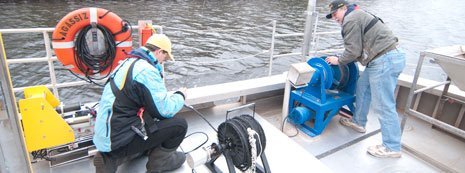Predicting the partitioning of organic compounds through Polymer materials: Quantum mechanical applications
Document Type
Article
Publication Date
2017
Abstract
Hazardous organic compounds can permeate gas pipelines and geomembranes made of organic polymer materials in landfills and leak into the surrounding environment, contaminating groundwater. The permeation of organic compounds in various organic polymer materials is explained by the molecular partition and the diffusion of organic compounds into polymer materials. The partition coefficient has two contributions resulting from size-based exclusion and molecular interaction. In this study, the authors use ab initio quantum mechanical calculations to investigate the molecular interaction between organic polymers and various organic compounds and seek the correlation with experimentally obtained partition coefficients reported in the literature. The authors examine 24 organic compounds and 4 polymer materials, including high-density polyethylene (HDPE) and polyvinyl chloride (PVC) geomembranes and casting, polybutylene (PB) pipes, and styrene-butadiene rubber (SBR) gaskets. The authors find a linear correlation between the theoretically calculated aqueous-phase free energies of interaction and experimentally obtained partition coefficients reported in the literature for HDPE, PB, and SBR. The study highlights the usefulness of free energy of interaction to predict the partition coefficients of organic compounds and provides mechanistic insight into the interaction between organic compounds and polymer materials.
Publication Title
Journal of Environmental Engineering
Recommended Citation
Zhang, M.,
Howe, K.,
&
Minakata, D.
(2017).
Predicting the partitioning of organic compounds through Polymer materials: Quantum mechanical applications.
Journal of Environmental Engineering,
144(4).
http://doi.org/10.1061/(ASCE)EE.1943-7870.0001361
Retrieved from: https://digitalcommons.mtu.edu/cee-fp/15


Publisher's Statement
©2018 American Society of Civil Engineers. Publisher's version of record: https://doi.org/10.1061/(ASCE)EE.1943-7870.0001361